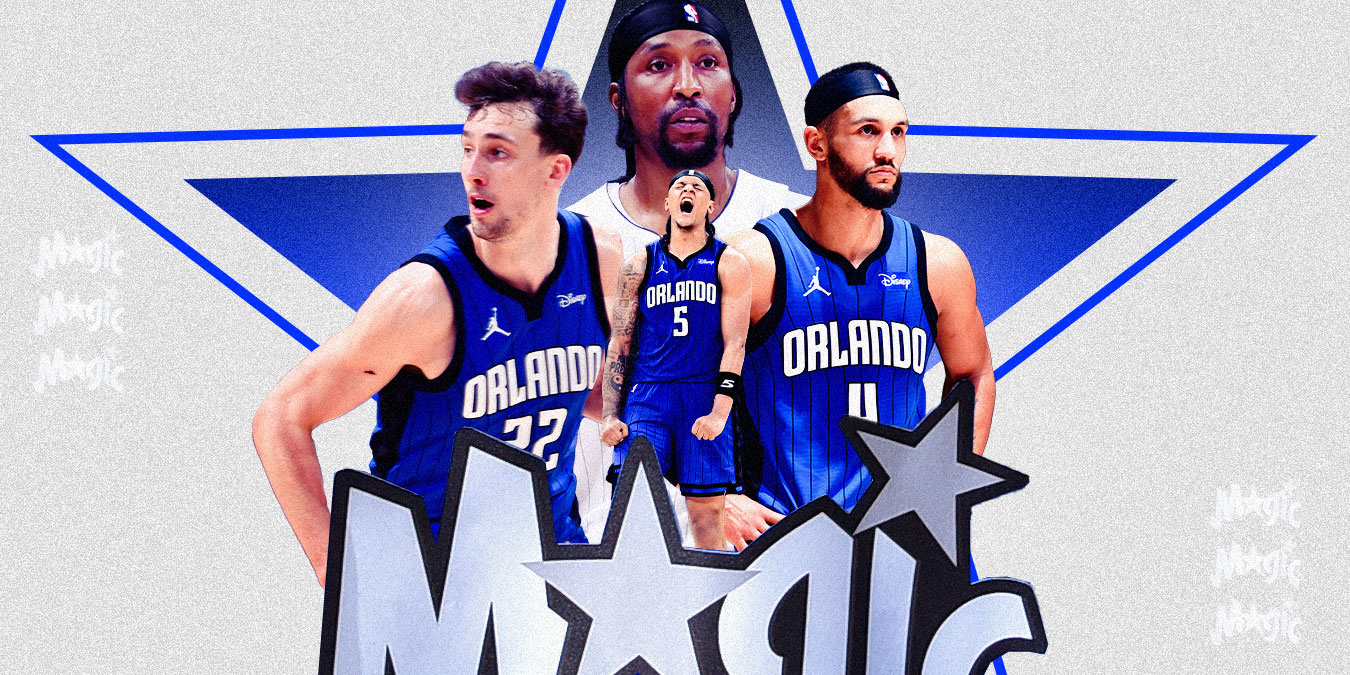Every year, there is a team that blows past offseason expectations and wins everyone’s hearts in the process.
Last year, that group was the Orlando Magic – who won 13 games more than they did in 2022-23, earning their first playoff berth since 2020.
But do you know what is even harder than being the new kid on the block? Being the team that builds on the momentum from the previous season to take the next step toward a title.
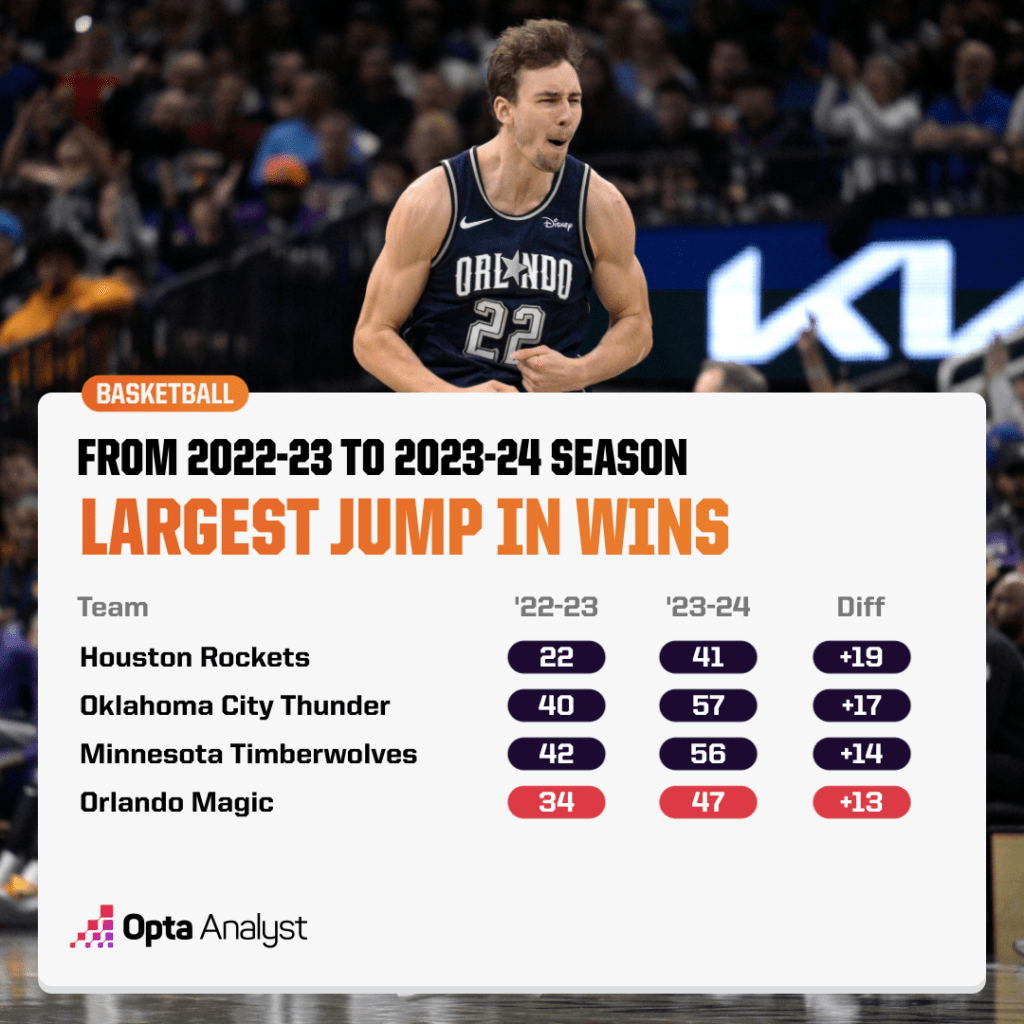
Over the last few years, the New York Knicks (the surprise team of 2020-21), Chicago Bulls (2021-22), and Sacramento Kings (2022-23) all took steps in the wrong direction in the year after their breakout run.
Are the Magic destined to repeat recent history and take a step back? Or are they ready to go from spunky to serious?
Continuity & Youth
The 2024-25 Magic have a very rare combination working for them: continuity and youth. Ten of their top 11 players in minutes played last year are returning (the one player who isn’t is Joe Ingles), and all of those players except Gary Harris are 27 years old or younger.
That doesn’t even account for Caleb Houstan (21) and Jett Howard (21), who were also on the team last year but weren’t in the top 11 in minutes.
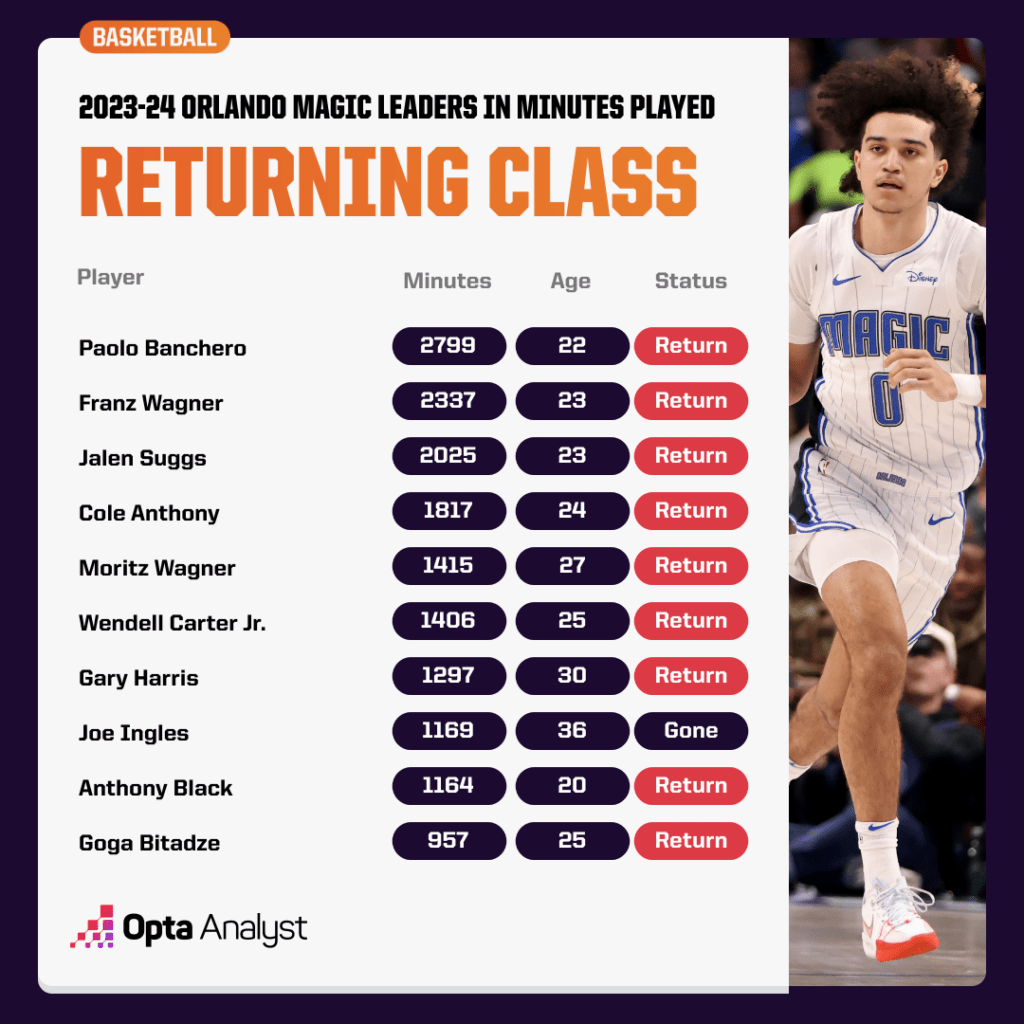
The only huge changes to this roster are the additions of prized free-agent signing Kentavious Caldwell-Pope and first round draft pick Tristan da Silva.
The Magic are Caldwell-Pope’s fifth team since 2017. At this point, the veteran 2 guard has a PhD in acclimating to new rosters. So, his transition into the lineup shouldn’t disrupt the Magic’s flow too much (if at all).
As for the 23-year-old da Silva, he further adds to the franchise’s youth agenda (he’s also got a great skill set for a plug-and-play role player).
High Floor, Low Ceiling
To me, the worst case scenario for the Magic this season (barring an unfortunate series of injuries) is still pretty good. That’s because of the elements we highlighted above.
The Magic are returning almost the entire team that finished third in defensive TRACR (D-TRACR) last season. On top of that, they will now have Caldwell-Pope, who finished in the 84th percentile in D-DRIP (0.8).
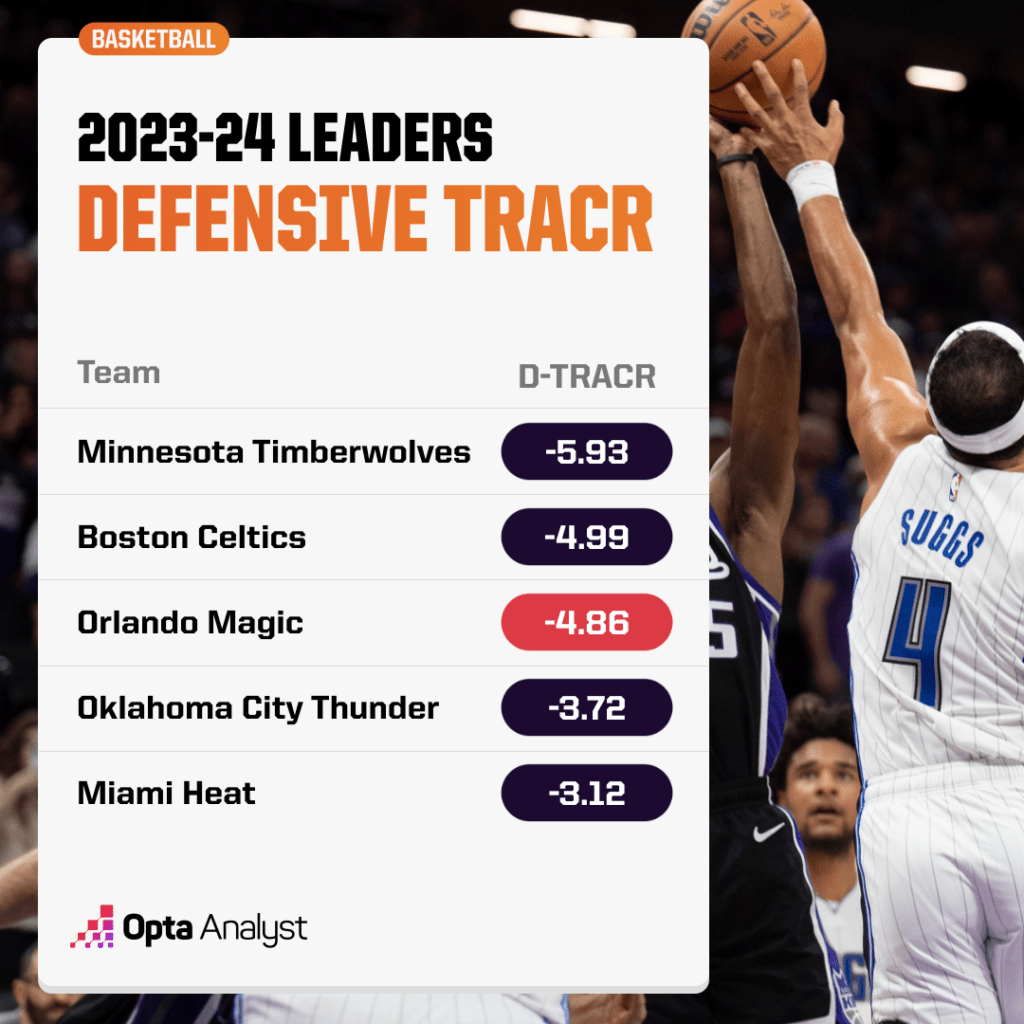
As long as they don’t have terrible opponent shooting luck, the Magic are basically guaranteed to have a top-five defense again this year. That alone should be enough to get you to the playoffs.
Just look at the Magic from last year. Even with their offense that ranked 23rd in offensive TRACR, they still managed to land the fifth seed and finish 14th in overall TRACR. That’s why coaches emphasize the value of defense so much. It can carry you a long way.
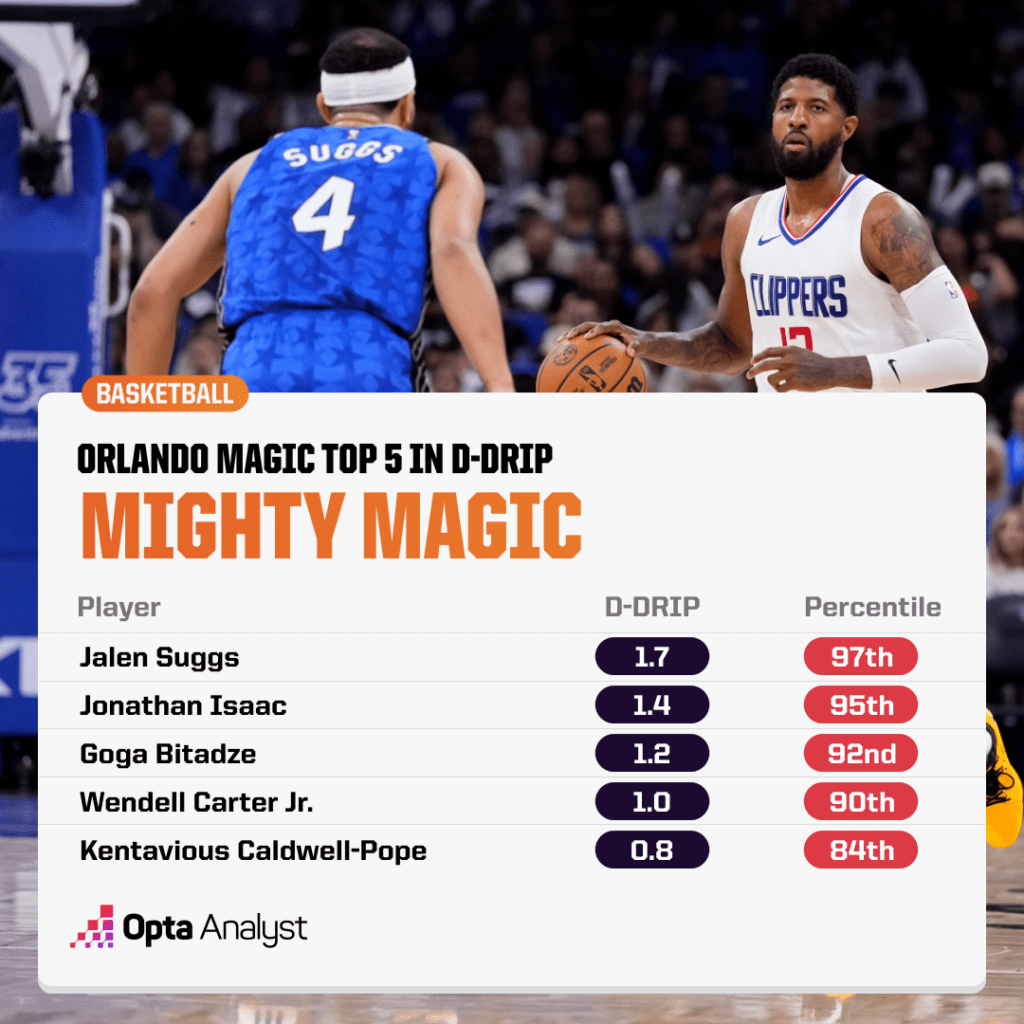
However, in 2024, there is a limit to how far an elite defense can take you. And that’s why I’m skeptical of how high this version of the Magic’s ceiling is. This offseason, they made some moves to improve their subpar offense, but I don’t think they did enough to truly move the needle.
To have a good half-court offense (the Magic were a great transition team last year), you typically need two things: spacing and on-ball creation.
By adding Caldwell-Pope (40.6% 3-point shooter last year) and da Silva (39.5% his senior season in college), and hopefully being able to lean on Howard more (a talented shooter in college), the Magic should be able to improve their 3-point attempt rate (29th in 3-point attempts per game), which, in turn, will enhance their spacing.
Unfortunately, they didn’t do enough to address their creation concerns. The Magic are a unique team in that their guards (Caldwell-Pope, Harris, Jalen Suggs and Anthony Black) are more of off-ball players than on-ball ones.* So, they are at a natural disadvantage in that regard.
[*Sidebar No. 1: In theory, Cole Anthony gives you on-ball scoring/playmaking, but he was pretty underwhelming in that regard last year, placing in only the 55th percentile in O-DRIP.]
This is the part of the lecture when someone shouts: What about Paolo Banchero and Franz Wagner? That duo will give you all the creation you need!
Well, Banchero and Wagner aren’t really suited to be a high-level offense’s primary focal points. How do I know this? I watched the Magic’s offense finish in the bottom 10 last year with those two in those exact roles. But just in case you needed some more persuasion, here is some data.
As the team’s bonafide No. 1 option last year, Banchero was in the 27th percentile in scoring efficiency (54.3% true shooting), and the Magic had an offensive rating of 117.3 when he was on the court. As for Wagner, as Banchero’s Robin, he was in the 52nd percentile in scoring efficiency (57.8%), and the Magic had an offensive rating of 118.7 in his minutes.
To compare them to a more qualified one-two punch, last year, Shai Gilgeous-Alexander was in the 90th percentile in scoring efficiency (63.9%), and the Oklahoma City Thunder had an offensive rating of 127.0 in his minutes. And his co-star, Jalen Williams, had a scoring efficiency in the 82nd percentile (62.1%), and the Thunder had an offensive rating of 123.4.
See the difference?
Now, one could argue that Banchero and Wagner will be more efficient with better spacing. But I think, even with that, they are still imperfect primary options because of their below-average jumpers and lack of elite playmaking vision.*
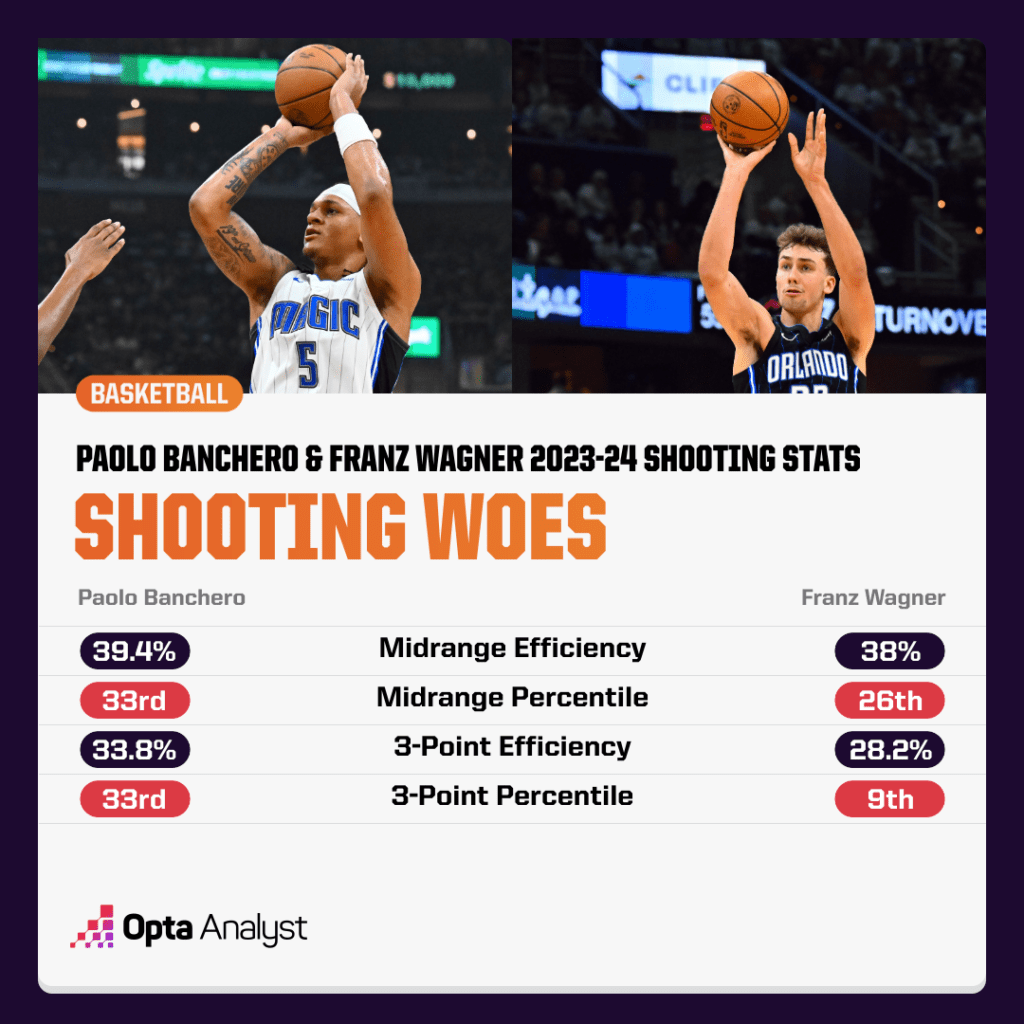
[*Sidebar No. 2: I’m not saying that Banchero and Wagner are bad passers. I think they are both really good. But there is a big difference between being really good and the cream of the crop!]
The Magic Need To Make A Trade
In my opinion, as long as the Magic are relying on Banchero and Wagner to carry their offense, they will have a hard time being more than first-round fodder in a vastly-improved Eastern Conference.
Banchero, in particular, is better used as a play-finisher than a play-creator, and he would benefit greatly from the Magic adding a strong ball handler who could allow him to fit into more of a Giannis Antetokounmpo role on offense (something I examined when he was a rookie).
With this in mind, I prescribe that the Magic take advantage of their backcourt log jam (they have a bunch of players at that spot that are valuable and play very similarly) and flip one or two of those pieces to add a creator.
If they want to do that sooner rather than later, they could make a push at Anfernee Simons or wait to see if the Sacramento Kings would move Malik Monk when he becomes trade eligible on Oct. 4. Adding a player of that caliber would give them a real chance at winning a playoff series or two this year – depending on how their young guys develop.
But if they prefer the route of patience (which it seems like they do), the Magic could wait until when one of the elite creators becomes available, put together a monster trade package featuring some of their youth and their cavalcade of draft capital, and orchestrate a blockbuster deal that nets them a true All-Star (one potential option, if he has a bounce-back campaign, could be Darius Garland).
If they do that, given their stout defensive infrastructure and tantalizing gallery of young talent, the Magic could take that step we’ve been talking about and another one on top of that. The one that puts you in the mix for title contention.
Be sure to check out our NFL, MLB, NBA, and college football coverage. And follow us on X, Instagram and Threads for more!
